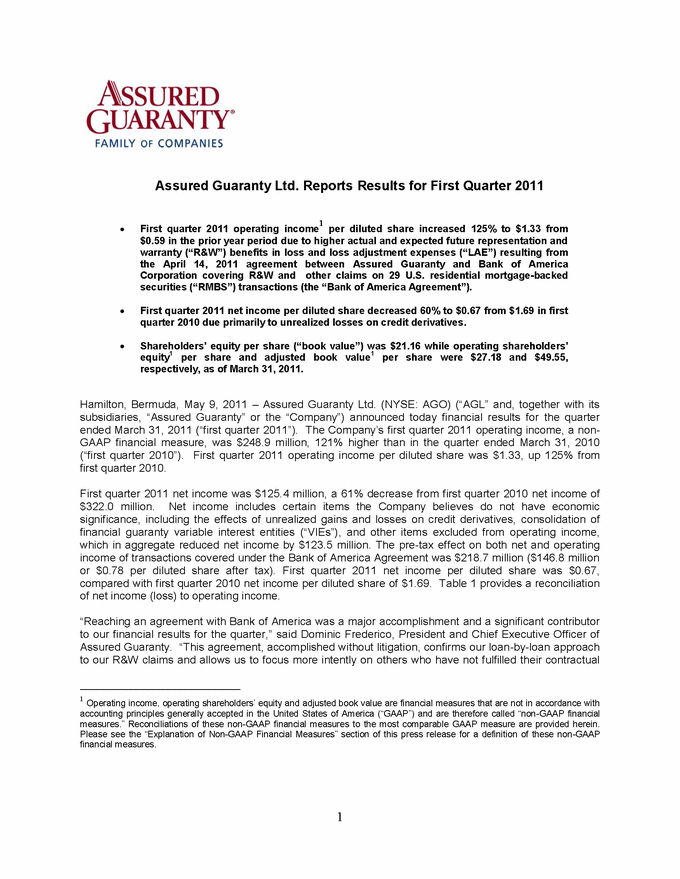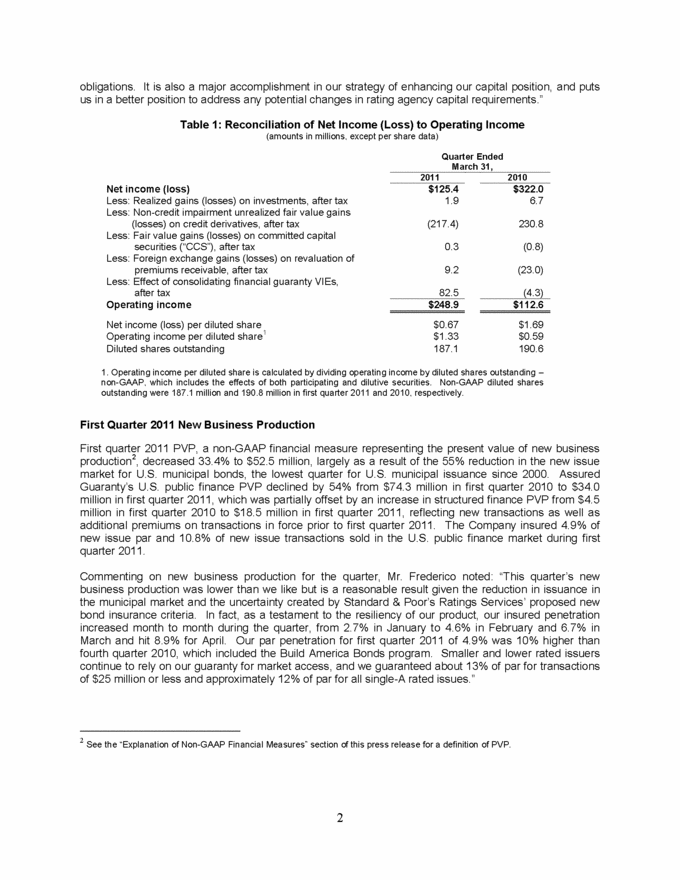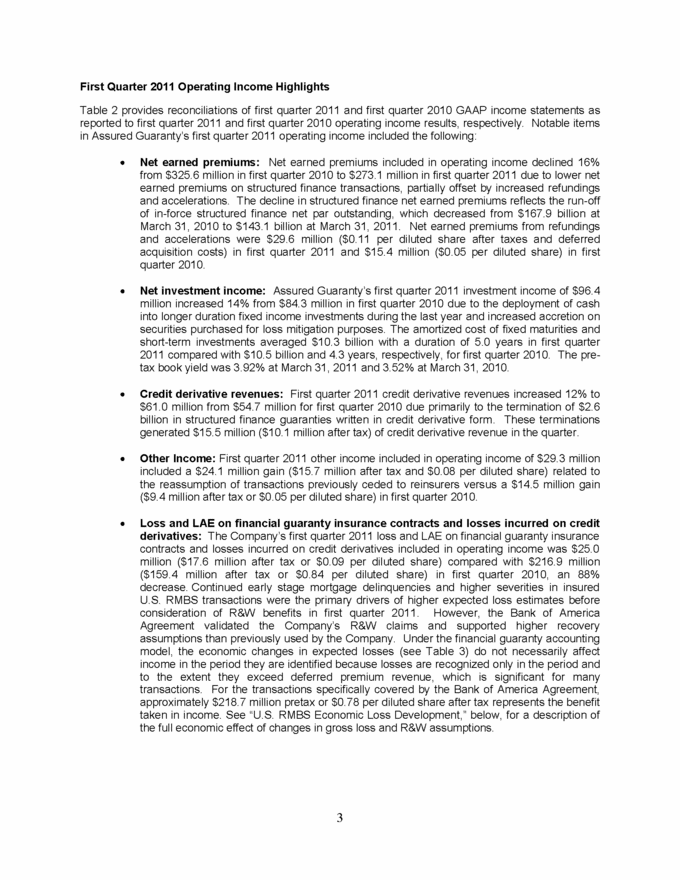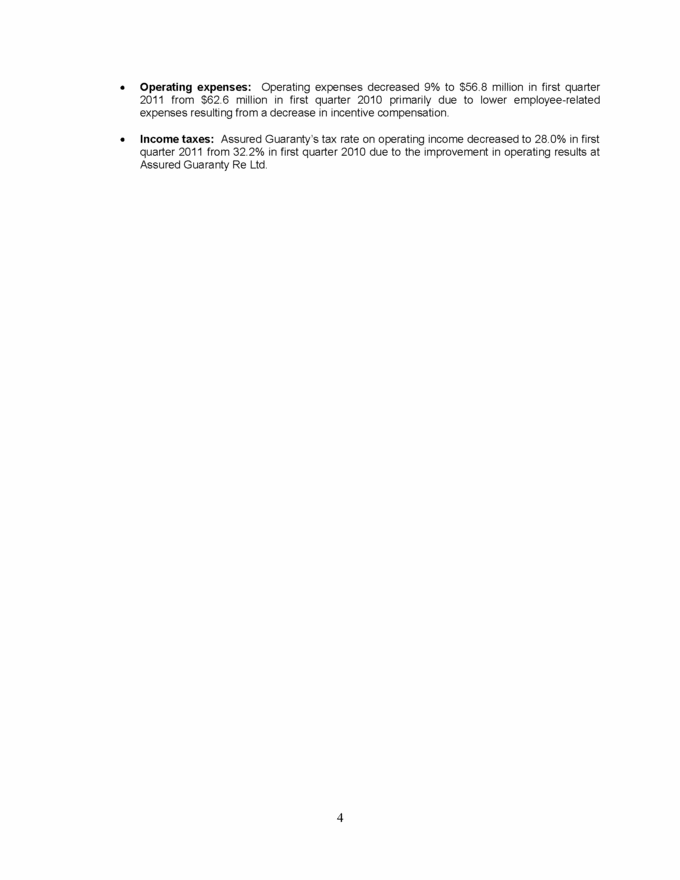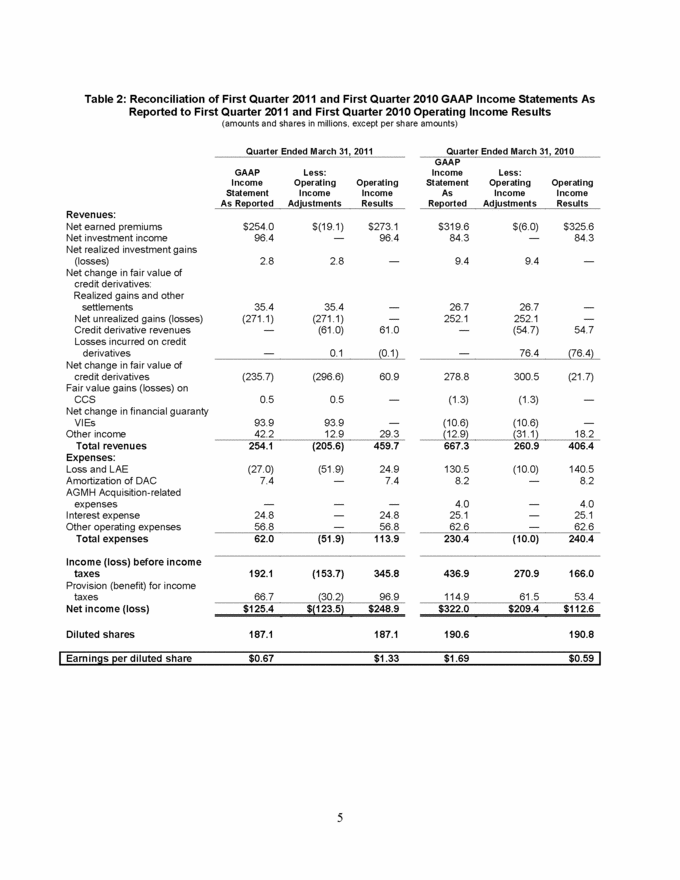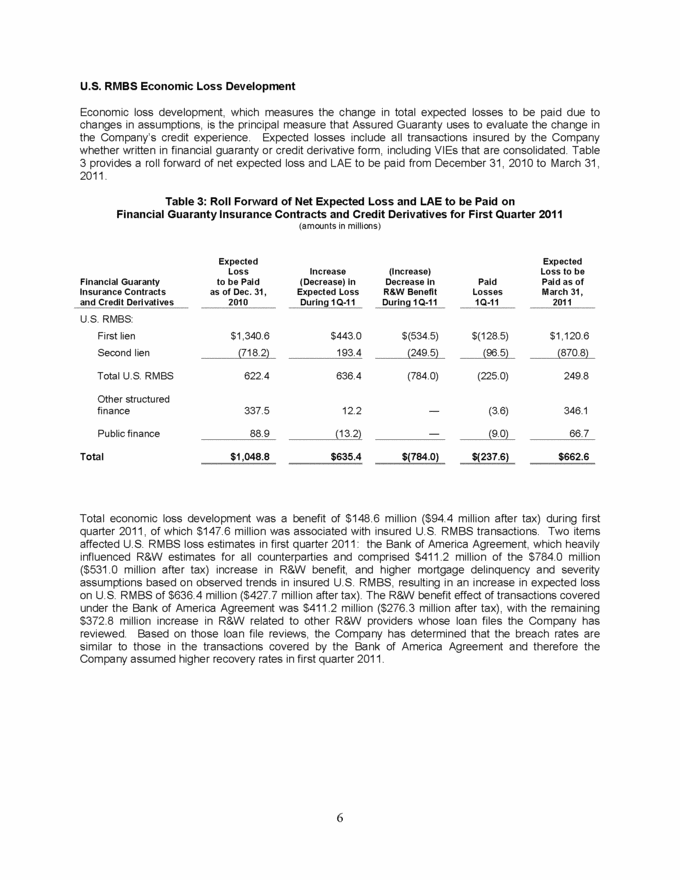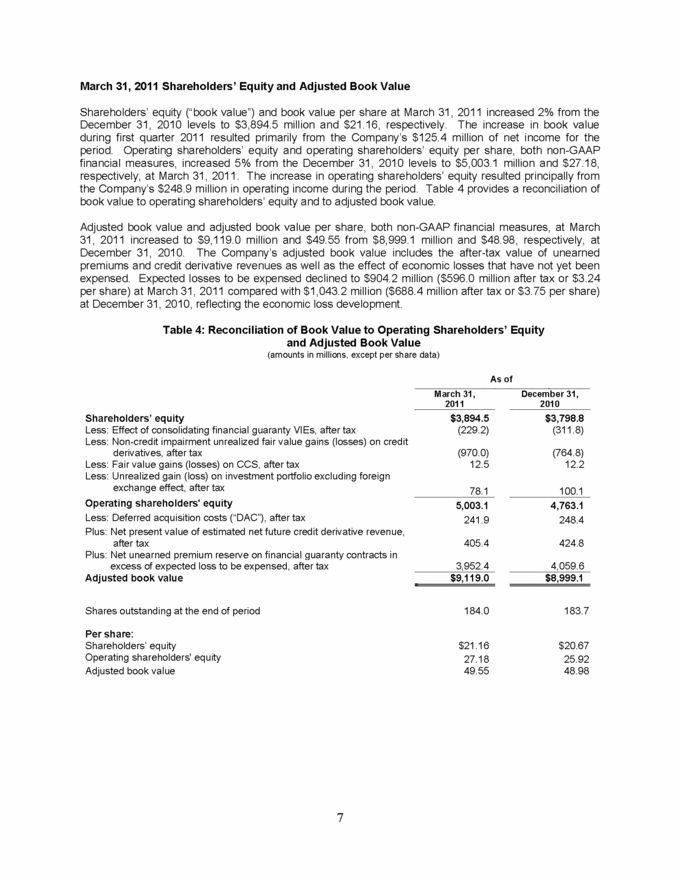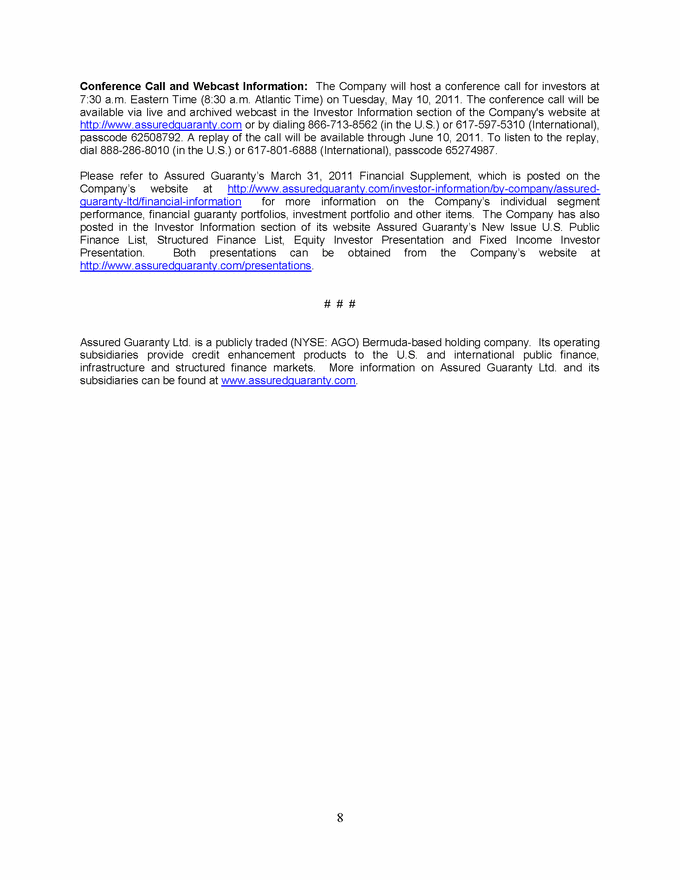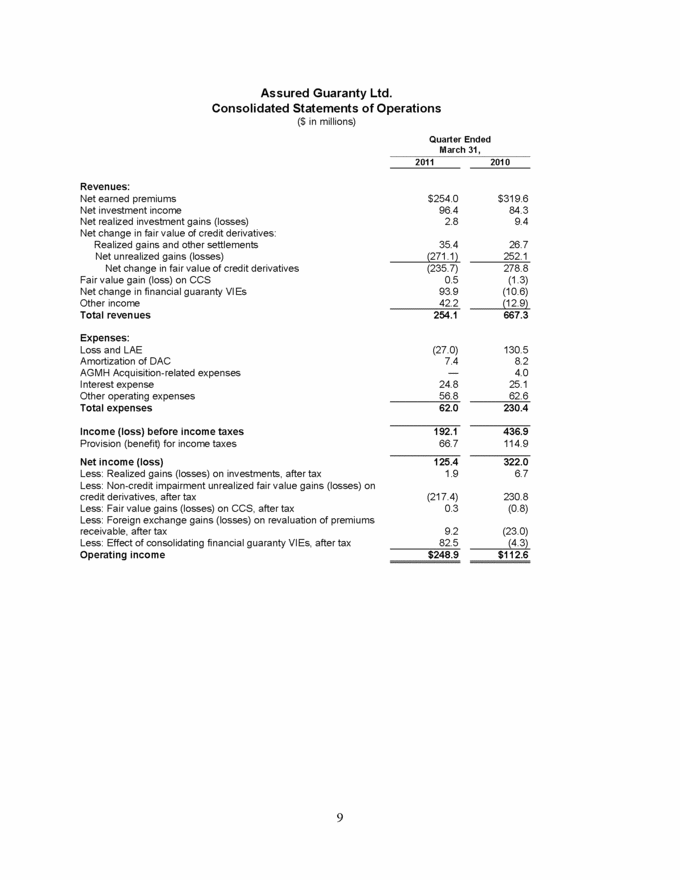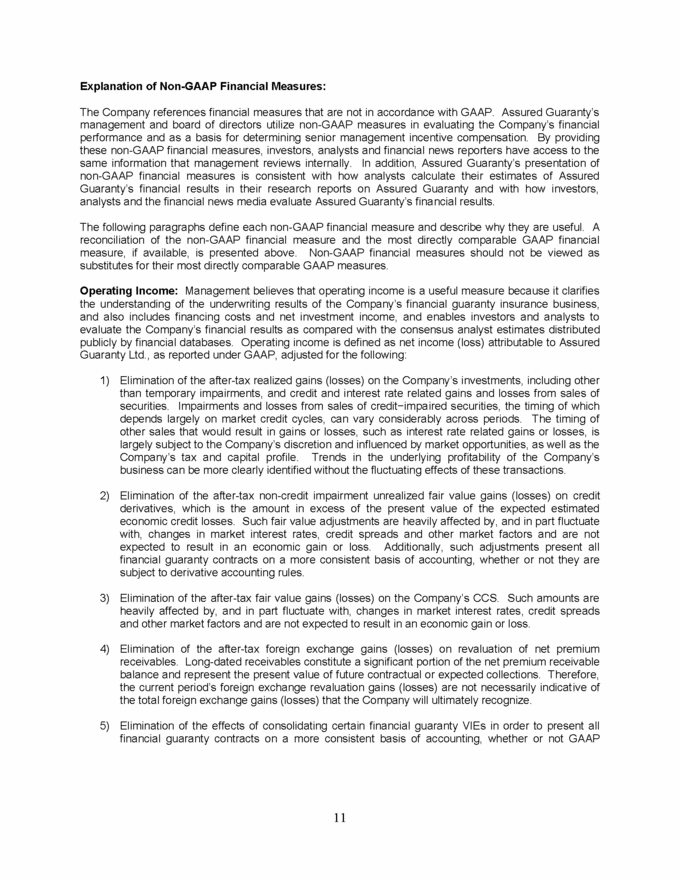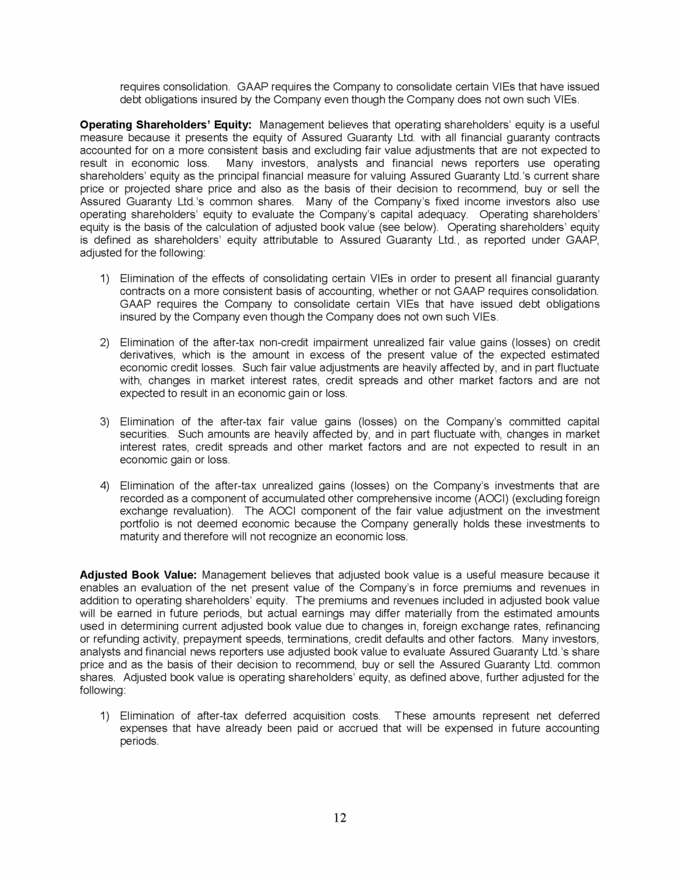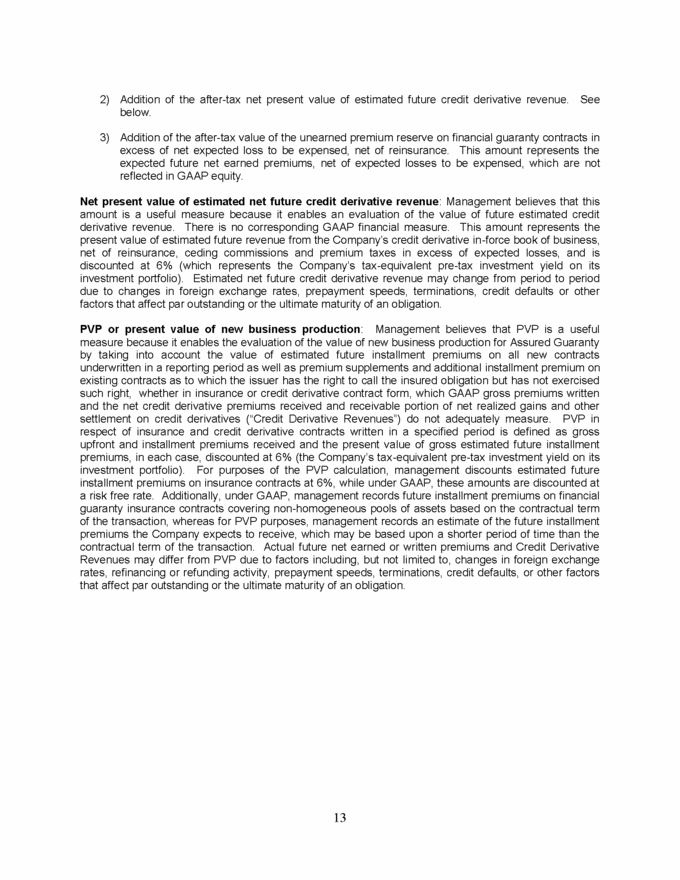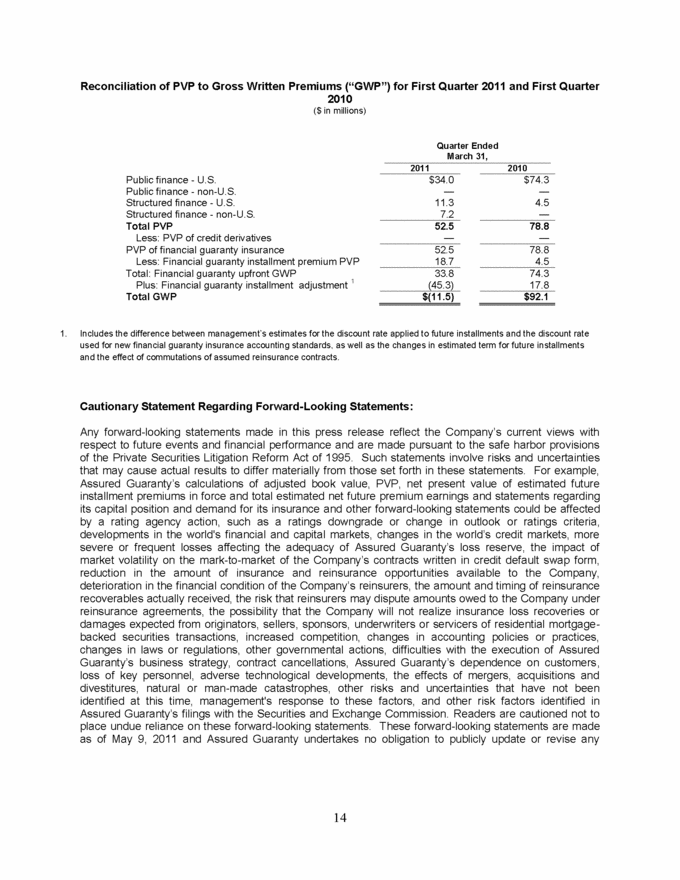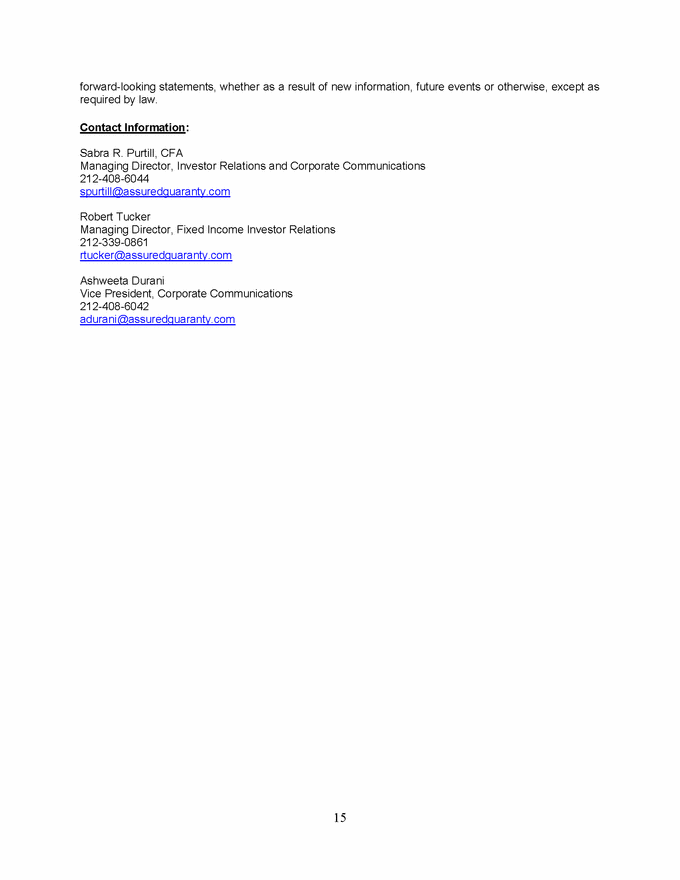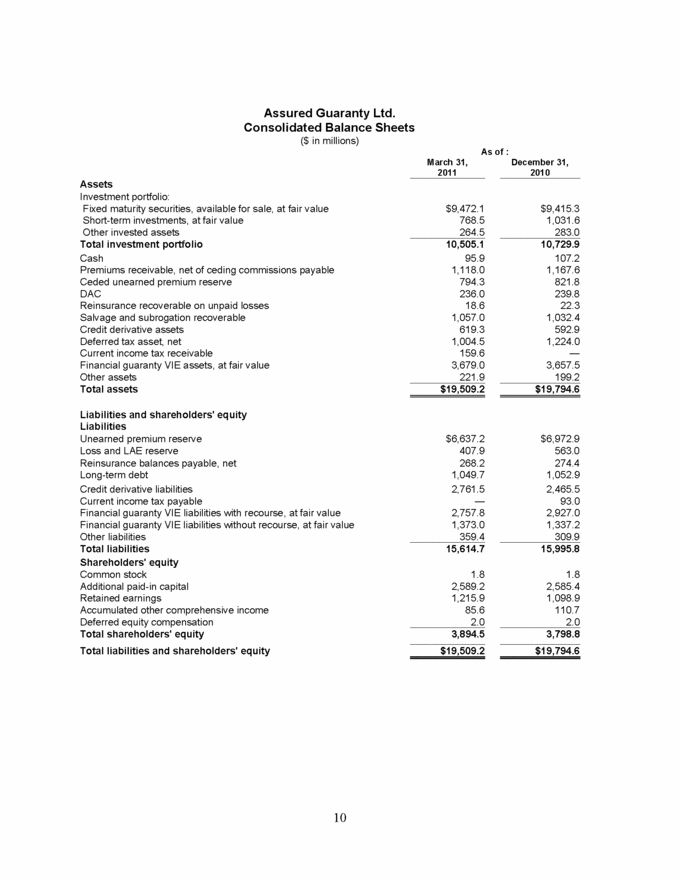
| Assured Guaranty Ltd. Consolidated Balance Sheets ($ in millions) As of : March 31, 2011 December 31, 2010 Assets Investment portfolio: Fixed maturity securities, available for sale, at fair value $9,472.1 $9,415.3 Short-term investments, at fair value 768.5 1,031.6 Other invested assets 264.5 283.0 Total investment portfolio 10,505.1 10,729.9 Cash 95.9 107.2 Premiums receivable, net of ceding commissions payable 1,118.0 1,167.6 Ceded unearned premium reserve 794.3 821.8 DAC 236.0 239.8 Reinsurance recoverable on unpaid losses 18.6 22.3 Salvage and subrogation recoverable 1,057.0 1,032.4 Credit derivative assets 619.3 592.9 Deferred tax asset, net 1,004.5 1,224.0 Current income tax receivable 159.6 — Financial guaranty VIE assets, at fair value 3,679.0 3,657.5 Other assets 221.9 199.2 Total assets $19,509.2 $19,794.6 Liabilities and shareholders' equity Liabilities Unearned premium reserve $6,637.2 $6,972.9 Loss and LAE reserve 407.9 563.0 Reinsurance balances payable, net 268.2 274.4 Long-term debt 1,049.7 1,052.9 Credit derivative liabilities 2,761.5 2,465.5 Current income tax payable — 93.0 Financial guaranty VIE liabilities with recourse, at fair value 2,757.8 2,927.0 Financial guaranty VIE liabilities without recourse, at fair value 1,373.0 1,337.2 Other liabilities 359.4 309.9 Total liabilities 15,614.7 15,995.8 Shareholders' equity Common stock 1.8 1.8 Additional paid-in capital 2,589.2 2,585.4 Retained earnings 1,215.9 1,098.9 Accumulated other comprehensive income 85.6 110.7 Deferred equity compensation 2.0 2.0 Total shareholders' equity 3,894.5 3,798.8 Total liabilities and shareholders' equity $19,509.2 $19,794.6 |
